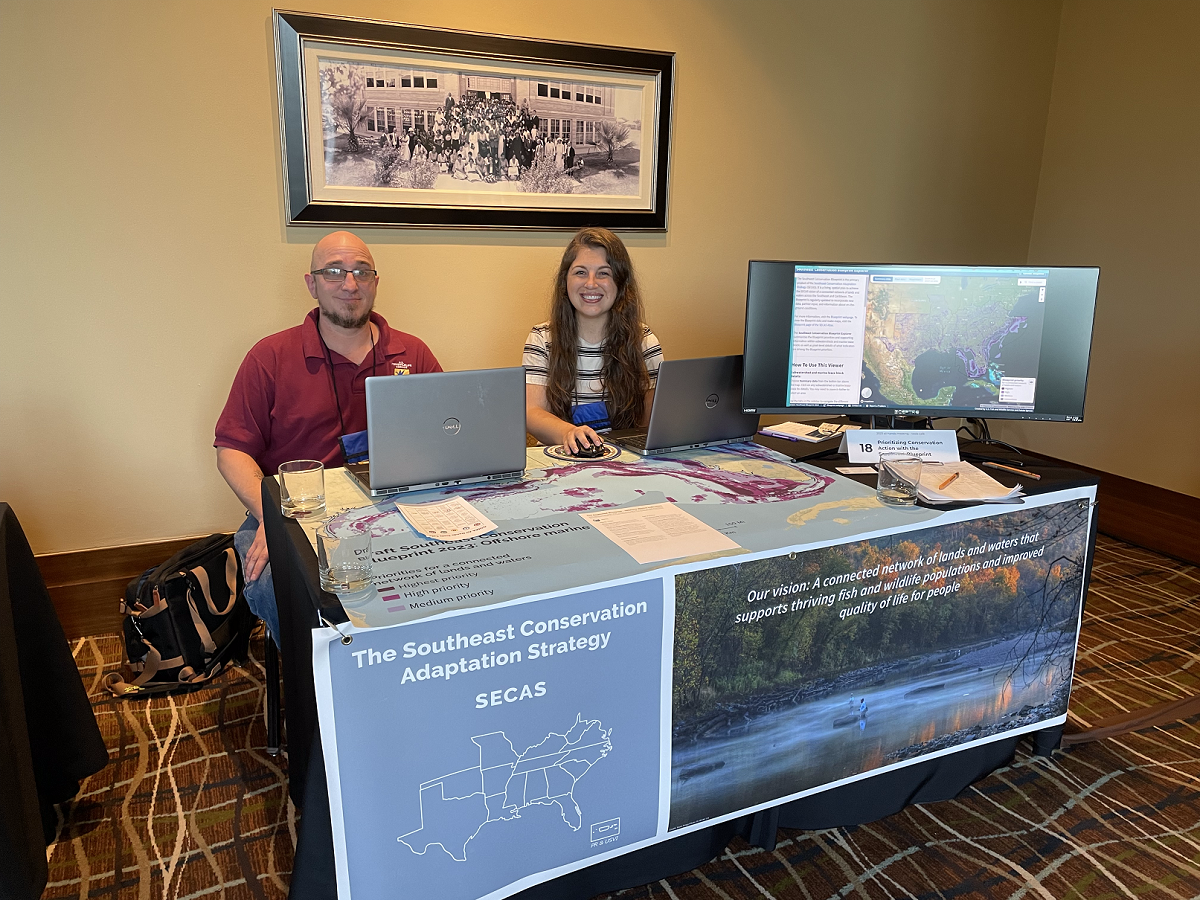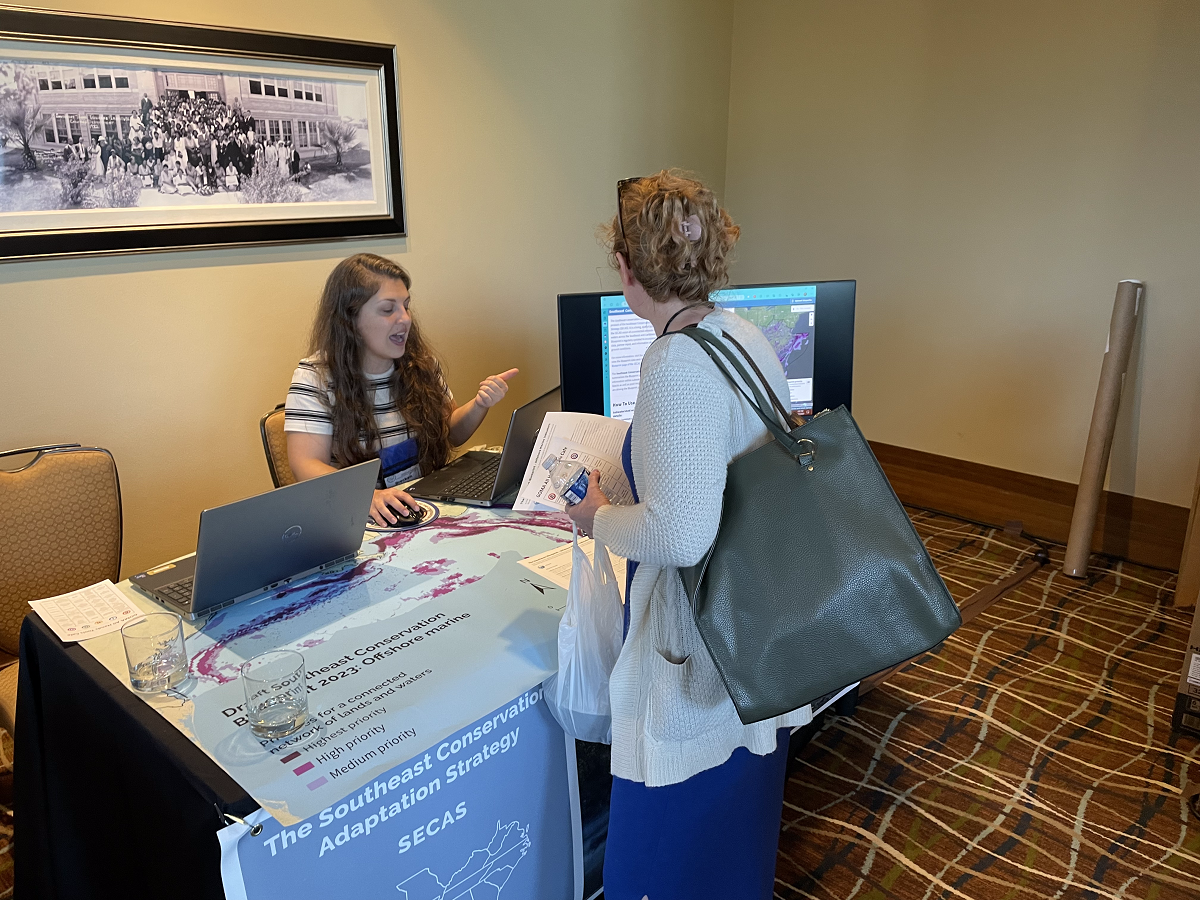Introducing the Southeast Conservation Blueprint to the Gulf of Mexico Alliance

Earlier this month, we attended the Gulf of Mexico Alliance (GOMA) All Hands Meeting. We were met with a group of optimistic, impassioned conservationists set on collaboratively preserving and restoring the coasts, reefs, and trenches of the Gulf of Mexico.
This was our first time attending the annual meeting, and GOMA partners welcomed us as if we’d always been part of the community. We quickly learned we were in the right place when the first session started out with bumping tunes, pom poms, and flying candy. The rest of the conference may not have been quite as flashy, but it was just as inspiring. GOMA invited a broad spectrum of speakers to discuss the most pressing issues of today, including water needs and quality, binational collaborations, action plans, and future directions. Breakout groups throughout the week dove deeper into topics involving wildlife and biodiversity, coastal resilience, data and monitoring, education, and more. The conference was well attended, hitting an all-time-high record and representing a myriad of organizations.
GOMA invited us to attend the conference and host a booth during their annual Tools Café. This session allows tool developers to showcase their work and receive feedback on how conservation organizations are using or may be interested in using their products. We enthusiastically accepted the opportunity to showcase the Southeast Conservation Blueprint at this meeting for the first time! As you may know, our team has spent the better part of this year updating the Blueprint to include deeper Atlantic and Gulf marine waters and the U.S. Caribbean territories, which now better represents the full extent of our Southeast geography. We were excited to display our more inclusive Blueprint and seek feedback from both veteran and novice Blueprint users alike!

We set up our booth (with some very inventive paperweights), fist bumped each other for encouragement, and awaited a session that would either flop or fly. Fortunately for us, it was the latter. We received a nearly continuous stream of attendees, some preemptively seeking us out while others were drawn to our eye-catching map. We received interest in using the Blueprint to identify high impact areas for shared conservation efforts in our current and new Blueprint geographies, supplement existing or upcoming conservation strategic plans, apply for grant funding opportunities, develop custom conservation tools, swap data, and more. Participants ranged from federal, state, and local agencies to institutions, non-governmental organizations, and industry, representing interests at all levels from the local to the international scale. We wrapped up feeling inspired by the amazing conservation work going on in this part of the South!
At the end of the week, we found ourselves sad to leave but inspired and filled with new ideas and partnerships to take back to our team. It was a comfort to experience shared interests, ambitions, and synergy—although, we suppose that is the definition of a community! We look forward to our time with the Gulf of Mexico community next year and thank GOMA for inviting us and putting on such a successful symposium.